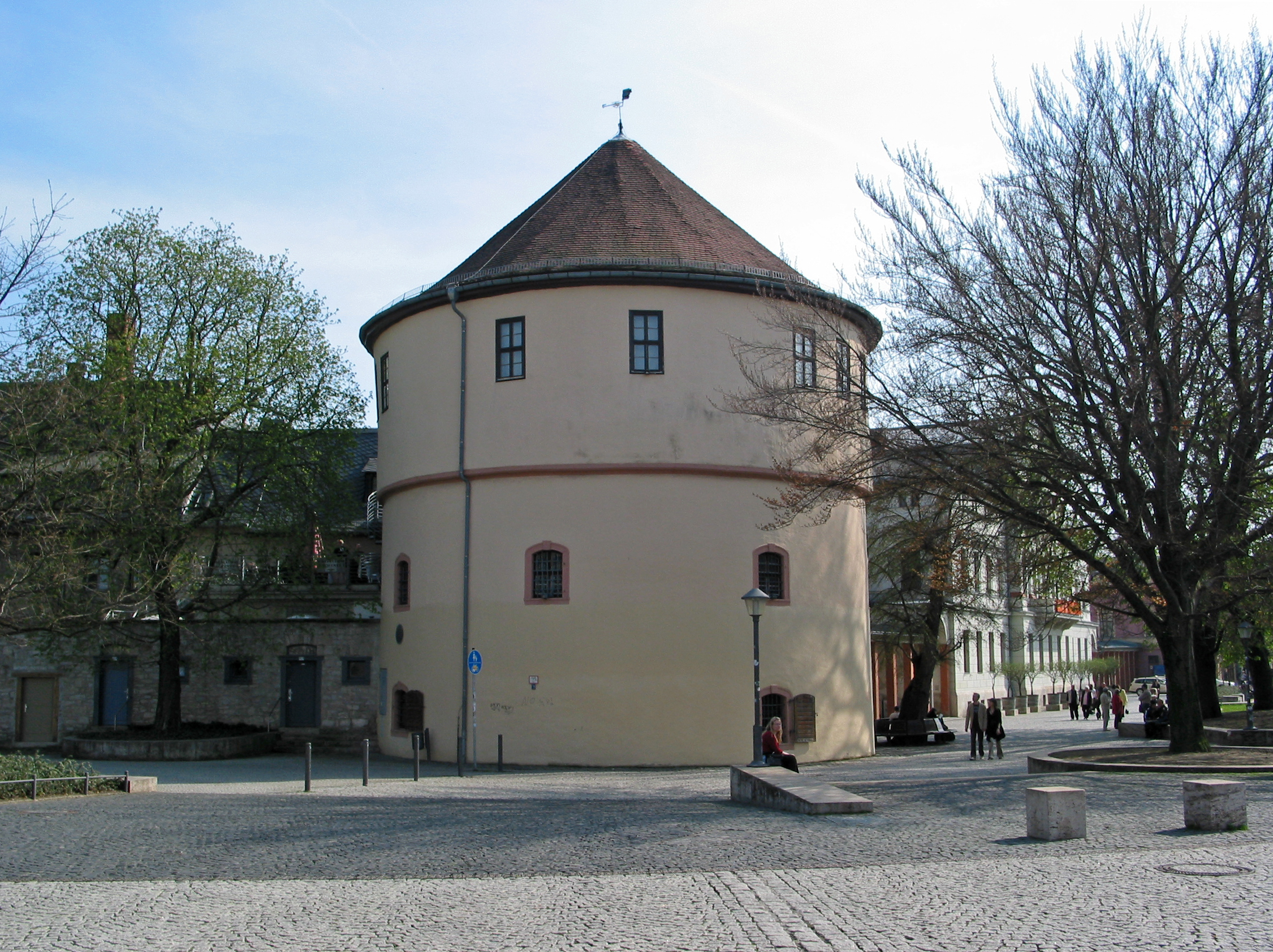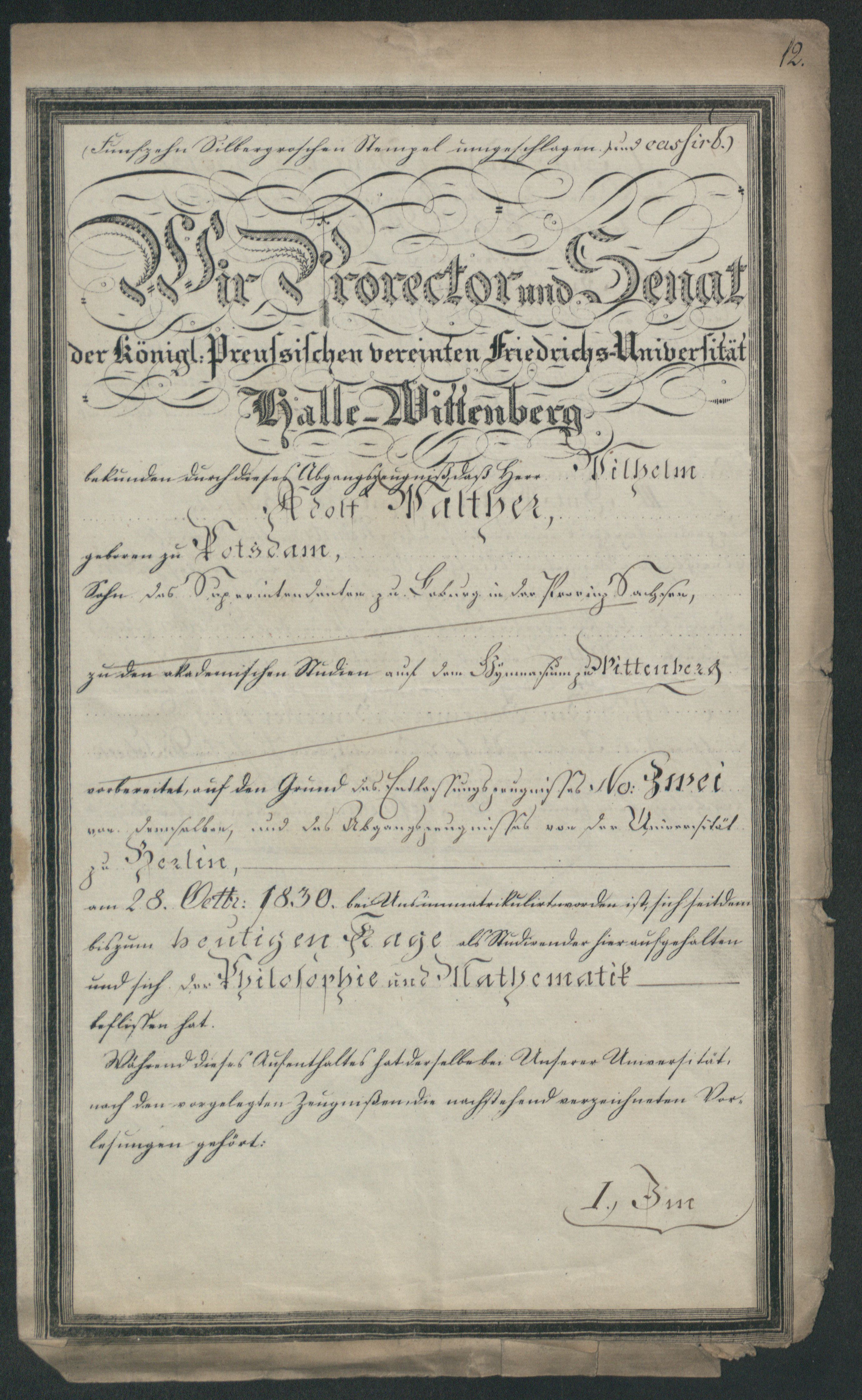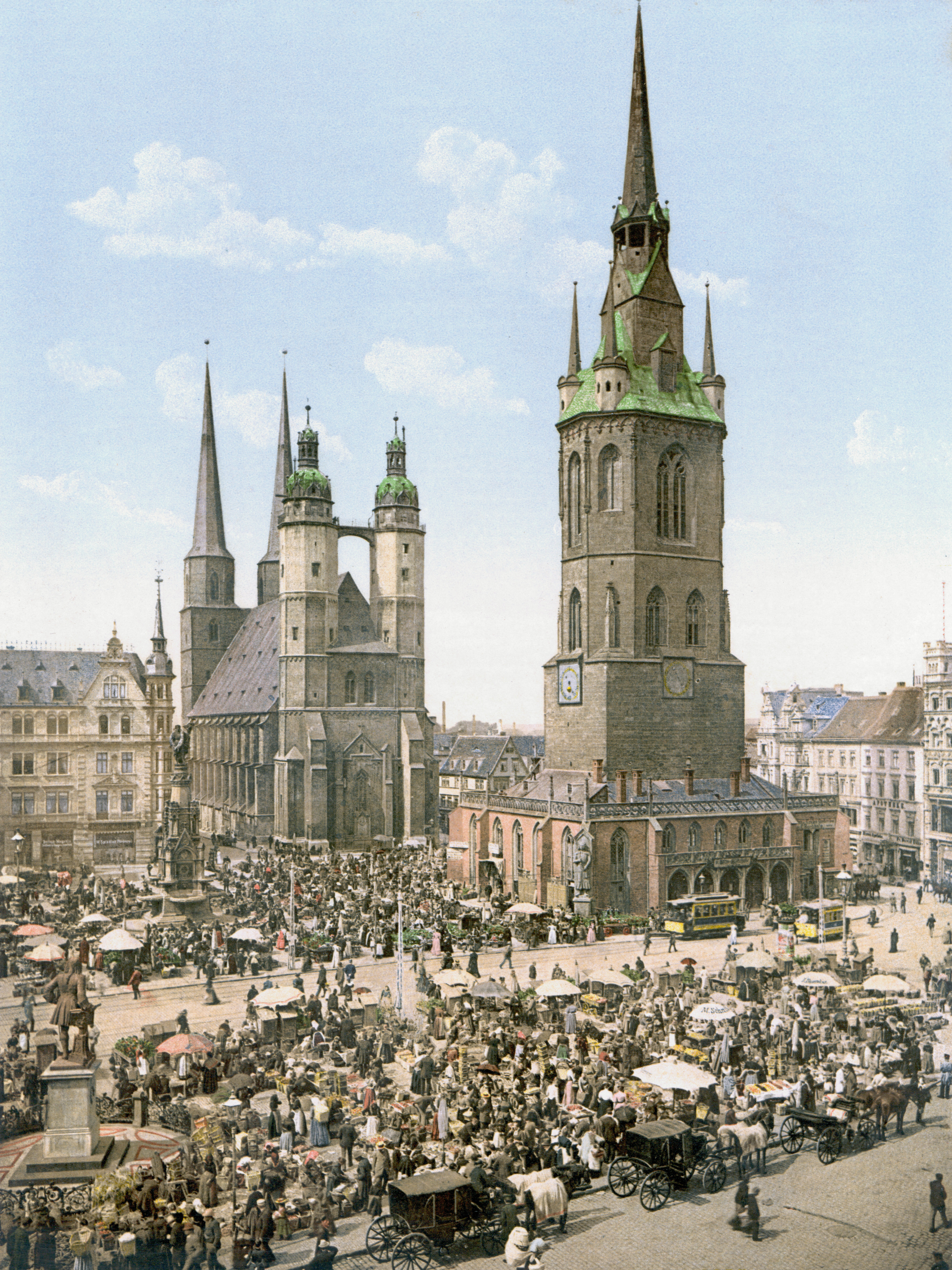|
Wilhelm Friedemann Bach
Wilhelm Friedemann Bach (22 November 17101 July 1784) was a German composer, organist and harpsichordist. He was the second child and eldest son of Johann Sebastian Bach and Maria Barbara Bach. Despite his acknowledged genius as an improviser and composer, his income and employment were unstable, and he died in poverty. Life Wilhelm Friedemann (hereafter Friedemann) was born in Weimar, where his father was employed as organist and chamber musician to the Duke of Saxe-Weimar. In July 1720, when Friedemann was nine, his mother Maria Barbara Bach died suddenly; Johann Sebastian Bach remarried in December 1721. J. S. Bach supervised Friedemann's musical education and career with great attention. The graded course of keyboard studies and composition that J. S. Bach provided is documented in the ''Clavier-Büchlein vor Wilhelm Friedemann Bach'' (modern spelling: ''Klavierbüchlein für Wilhelm Friedemann Bach''), with entries by both father and son. This education also included ... [...More Info...] [...Related Items...] OR: [Wikipedia] [Google] [Baidu] |
Weimar
Weimar is a city in the state (Germany), German state of Thuringia, in Central Germany (cultural area), Central Germany between Erfurt to the west and Jena to the east, southwest of Leipzig, north of Nuremberg and west of Dresden. Together with the neighbouring cities of Erfurt and Jena, it forms the central metropolitan area of Thuringia, with approximately 500,000 inhabitants. The city itself has a population of 65,000. Weimar is well known because of its cultural heritage and importance in German history. The city was a focal point of the German Enlightenment and home of the leading literary figures of Weimar Classicism, Johann Wolfgang von Goethe and Friedrich Schiller. In the 19th century, composers such as Franz Liszt made Weimar a music centre. Later, artists and architects including Henry van de Velde, Wassily Kandinsky, Paul Klee, Lyonel Feininger, and Walter Gropius came to the city and founded the Bauhaus movement, the most important German design school of the int ... [...More Info...] [...Related Items...] OR: [Wikipedia] [Google] [Baidu] |
University Of Halle
Martin Luther University Halle-Wittenberg (), also referred to as MLU, is a public research university in the cities of Halle and Wittenberg. It is the largest and oldest university in the German state of Saxony-Anhalt. MLU offers German and international (English) courses leading to academic degrees such as BA, BSc, MA, MSc, doctoral degrees, and habilitation. The university was created in 1817 through the merger of the University of Wittenberg (founded in 1502) and the University of Halle (founded in 1694). MLU is named after Protestant reformer Martin Luther, who was a professor in Wittenberg. Today, the university campus is located in Halle, while ''Leucorea Foundation'' in Wittenberg serves as MLU's convention centre. History University of Wittenberg (''Universität Wittenberg'') was founded in 1502 by Frederick the Wise, Elector of Saxony to propagate the principles of Renaissance humanism. The foundation of the university was heavily criticized, especially wh ... [...More Info...] [...Related Items...] OR: [Wikipedia] [Google] [Baidu] |
Johann Samuel Petri
Johann, typically a male given name, is the German form of ''Iohannes'', which is the Latin form of the Greek name ''Iōánnēs'' (), itself derived from Hebrew name '' Yochanan'' () in turn from its extended form (), meaning "Yahweh is Gracious" or "Yahweh is Merciful". Its English language equivalent is John. It is uncommon as a surname. People People with the name Johann include: Mononym *Johann, Count of Cleves (died 1368), nobleman of the Holy Roman Empire *Johann, Count of Leiningen-Dagsburg-Falkenburg (1662–1698), German nobleman *Johann, Prince of Hohenzollern-Sigmaringen (1578–1638), German nobleman A–K * Johann Adam Hiller (1728–1804), German composer * Johann Adam Reincken (1643–1722), Dutch/German organist * Johann Adam Remele (died 1740), German court painter * Johann Adolf I, Duke of Saxe-Weissenfels (1649–1697) * Johann Adolph Hasse (1699-1783), German Composer * Johann Altfuldisch (1911—1947), German Nazi SS concentration camp officer executed for ... [...More Info...] [...Related Items...] OR: [Wikipedia] [Google] [Baidu] |
Friedrich Wilhelm Rust
Friedrich Wilhelm Rust (6 July 173928 February 1796) was a German violinist, pianist and composer. He hailed from a renowned musical family in Germany. He was the father of the pianist and organist Wilhelm Karl Rust and the grandfather of Thomaskantor, composer and Bach scholar Wilhelm Rust. Life He was born in Wörlitz in Anhalt-Dessau (now in Saxony-Anhalt) on 6 July 1739. Encouraged to study violin, Rust was taught early on by his older brother, Johann Ludwig Anton, who was an accomplished musician with J.S. Bach's orchestra and played as a violinist in Leipzig. Rust also studied piano, particularly the works of Johann Sebastian Bach; he was able to play his collection of preludes and fugues in all keys '' Das Wohltemperierte Clavier'' from memory at the age of 13 or 16, according to other sources. His father, a princely ''Kammerrat'' and bailiff, died in 1751, and he moved with his mother and brother to Gröbzig. He attended the Lutheran gymnasium in Cöthen beginning in ... [...More Info...] [...Related Items...] OR: [Wikipedia] [Google] [Baidu] |
Gottfried Mittag
Gottfried is a masculine German given name. It is derived from the Old High German name , recorded since the 7th century, and composed of the elements (conflated from the etyma for "God" and "good", and possibly further conflated with ) and ("peace" or "protection"). The German name was commonly hypocoristically abbreviated as '' Götz'' from the late medieval period. ''Götz'' and variants (including '' Göthe, Göthke'' and ''Göpfert'') also came into use as German surnames. Gottfried is also a common surname among Ashkenazi Jews. Given name The given name ''Gottfried'' became extremely frequent in Germany in the High Middle Ages, to the point of eclipsing most other names in ''God-'' (such as ''Godabert, Gotahard, Godohelm, Godomar, Goduin, Gotrat, Godulf'', etc.) The name was Latinised as ''Godefridus''. Medieval bearers of the name include: *Gotfrid, Duke of Alemannia and Raetia (d. 709) *Godefrid (d. c. 720), son of Drogo of Champagne, Frankish nobleman. *Godfrid Ha ... [...More Info...] [...Related Items...] OR: [Wikipedia] [Google] [Baidu] |
Oklahoma
Oklahoma ( ; Choctaw language, Choctaw: , ) is a landlocked U.S. state, state in the South Central United States, South Central region of the United States. It borders Texas to the south and west, Kansas to the north, Missouri to the northeast, Arkansas to the east, New Mexico to the west, and Colorado to the northwest. Partially in the western extreme of the Upland South, it is the List of U.S. states and territories by area, 20th-most extensive and the List of U.S. states and territories by population, 28th-most populous of the 50 United States. Its residents are known as Oklahomans and its capital and largest city is Oklahoma City. The state's name is derived from the Choctaw language, Choctaw words , 'people' and , which translates as 'red'. Oklahoma is also known informally by its List of U.S. state and territory nicknames, nickname, "The Sooner State", in reference to the Sooners, American pioneer, American settlers who staked their claims in formerly American Indian-o ... [...More Info...] [...Related Items...] OR: [Wikipedia] [Google] [Baidu] |
Seven Years' War
The Seven Years' War, 1756 to 1763, was a Great Power conflict fought primarily in Europe, with significant subsidiary campaigns in North America and South Asia. The protagonists were Kingdom of Great Britain, Great Britain and Kingdom of Prussia, Prussia versus Kingdom of France, France and Habsburg monarchy, Austria, the respective coalitions receiving by countries including Portuguese Empire, Portugal, Spanish Empire, Spain, Electorate of Saxony, Saxony, Age of Liberty, Sweden, and Russian Empire, Russia. Related conflicts include the Third Silesian War, French and Indian War, Carnatic wars, Third Carnatic War, Anglo-Spanish War (1762–1763), Anglo-Spanish War (1762–1763), and Spanish–Portuguese War (1762–1763), Spanish–Portuguese War. Although the War of the Austrian Succession ended with the Treaty of Aix-la-Chapelle (1748), none of the signatories were happy with the terms, and it was generally viewed as a temporary armistice. It led to a strategic realignment kn ... [...More Info...] [...Related Items...] OR: [Wikipedia] [Google] [Baidu] |
Halle, Saxony-Anhalt
Halle (Saale), or simply Halle (), is the second largest city of the German state of Saxony-Anhalt. It is the sixth-most populous city in the area of former East Germany after (East) Berlin, Leipzig, Dresden, Chemnitz and Magdeburg as well as the 31st-largest city of Germany. With around 226,000 inhabitants, it is less populous than the state capital, Magdeburg. With Leipzig, the largest city of Saxony, Halle forms the polycentric Leipzig-Halle conurbation. Leipzig/Halle International Airport lies between the two cities, in Schkeuditz. The Leipzig-Halle conurbation is at the heart of the larger Central German Metropolitan Region. Halle has been known by many names throughout its history. From the 15th to the 17th century: ''Hall in Sachsen''. From then until the beginning of the 20th century, the name Halle an der Saale was used, and still remains a more formal reference for the city. Additionally, from 1965 to 1995 the city was referred to as ''Halle/Saale''. Halle lies i ... [...More Info...] [...Related Items...] OR: [Wikipedia] [Google] [Baidu] |
Marktkirche Unser Lieben Frauen
The Marktkirche Unser Lieben Frauen ("Market Church of Our Dear Lady") is a church in the centre of the city of Halle, Saxony-Anhalt, Germany. It was built between 1529 and 1554 and is the most recent of the city's medieval churches. In German, its official name is shortened to Liebfrauenkirche but it is also referred to as Marienkirche (St. Mary's Church) and the Marktkirche (Market Church). The church replaced two former churches in the market area, their towers were integrated into the new building. The Market Church is considered one of the most important buildings of the late Gothic period in central Germany. Its four towers, together with the Red Tower, are the landmark of the city, hence its nickname "Stadt der fünf Türme" (City of the Five Towers). Justus Jonas introduced the Reformation into Halle, and his friend Martin Luther preached in the church. George Frideric Handel was baptized here and received his first organ lessons. Johann Sebastian Bach inspected the new ... [...More Info...] [...Related Items...] OR: [Wikipedia] [Google] [Baidu] |
Hermann Carl Von Keyserlingk
Count Hermann Karl von Keyserling (1697–1764) was a Russian diplomat from the Keyserlingk family of Baltic German nobility based in the Duchy of Courland and Semigallia. Life In 1733, the nobility of Courland sent Keyserling to Saint Petersburg in order to inform Ernst Johann von Biron that he had been elected Duke of Courland. Biron was so pleased with the news that he had Keyserlingk appointed President of the Saint Petersburg Academy of Sciences. A year later, Keyserling was appointed Ambassador of the Russian Empire at the court of August III in Dresden and Warsaw. He kept this position until his death. As the Russian ambassador to the imperial court in Vienna he was made an imperial count in 1744. Johann Sebastian Bach was said by his first biographer, Johann Nikolaus Forkel, to have composed the Goldberg Variations for Count Keyserling as a sleep aid. The work takes its name from Johann Gottlieb Goldberg, a musician in the service of Count Keyserling. His son Heinric ... [...More Info...] [...Related Items...] OR: [Wikipedia] [Google] [Baidu] |
Peter Williams (musicologist)
Peter Williams (14 May 1937 – 20 March 2016) was an English musicologist, author, harpsichordist, organist, and professor. Williams was considered one of the leading scholars on the organ and the life and works of Johann Sebastian Bach. Life and education Peter Fredric Williams was born in Wolverhampton, England on 14 May 1937 to a Methodist family. He received a Bachelor of Arts (1958), Bachelor of Music (1959), Master of Arts (1962), and a PhD (1963) at St. John's College in Cambridge. Williams became a lecturer at the University of Edinburgh in 1962, eventually becoming a reader in 1972, then a professor ten years later, where he held the first chair in performance practice in the UK. He was made Distinguished Professor of Arts and Sciences at Duke University in Durham, North Carolina in 1985. Here, he was also chairman of the music department (1985–1988), university organist (1985–1990), and the director of the graduate center for performance practice studies (1990–1 ... [...More Info...] [...Related Items...] OR: [Wikipedia] [Google] [Baidu] |
Goldberg Variations
The ''Goldberg Variations'' (), BWV 988, is a musical composition for keyboard by Johann Sebastian Bach, consisting of an aria and a set of thirty variations. First published in 1741, it is named after Johann Gottlieb Goldberg, who may also have been the first performer of the work. Composition The story of how the variations came to be composed comes from an early biography of Bach by Johann Nikolaus Forkel: Forkel wrote his biography in 1802, more than 60 years after the events related, and its accuracy has been questioned. The lack of dedication on the title page also makes the tale of the commission unlikely. Goldberg's age at the time of publication (14 years) has also been cited as grounds for doubting Forkel's tale, although it must be said that he was known to be an accomplished keyboardist and sight-reader. contends that the Forkel story is entirely spurious. Arnold Schering has suggested that the aria on which the variations are based was not written ... [...More Info...] [...Related Items...] OR: [Wikipedia] [Google] [Baidu] |




